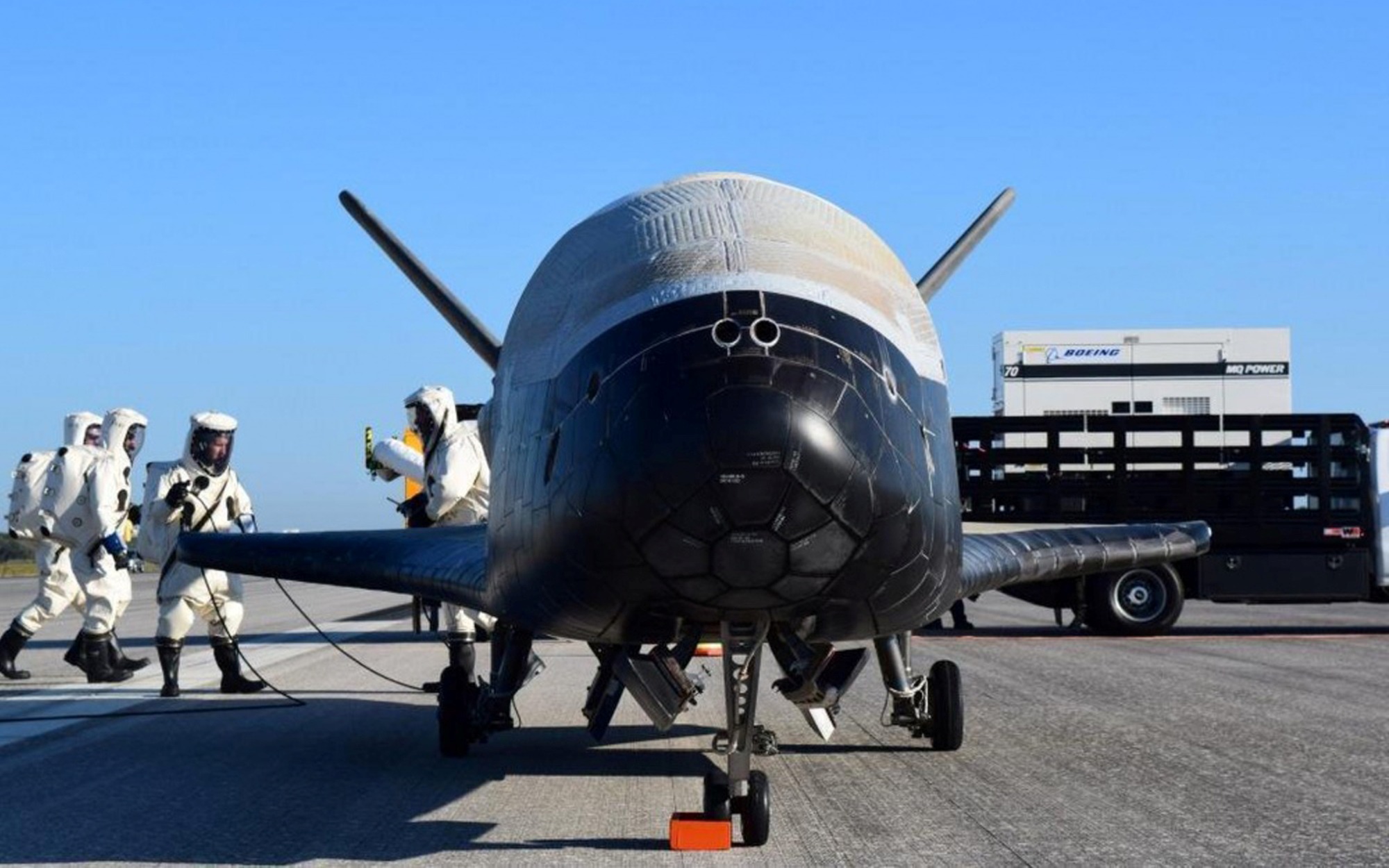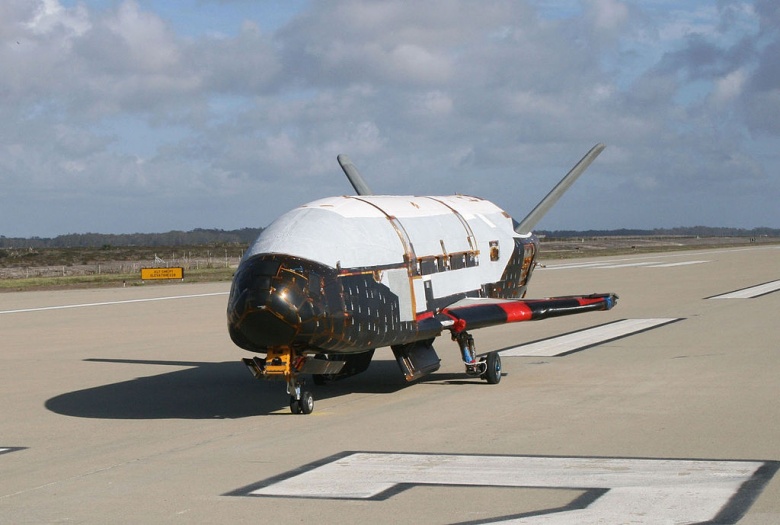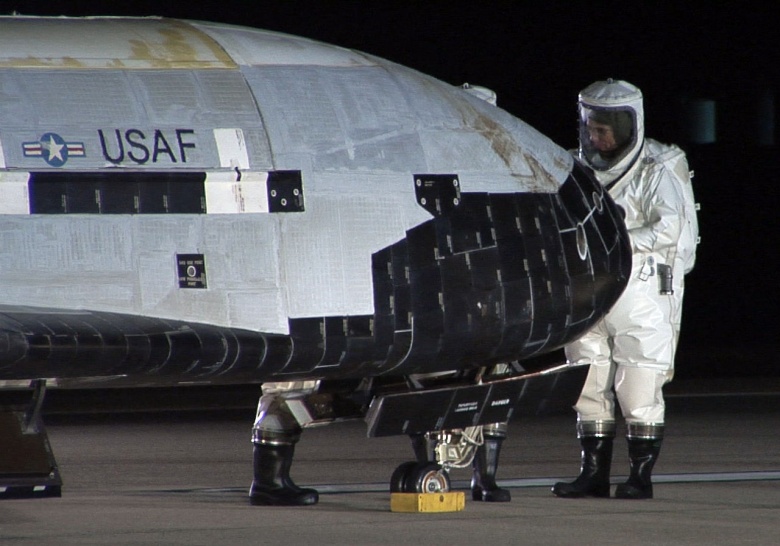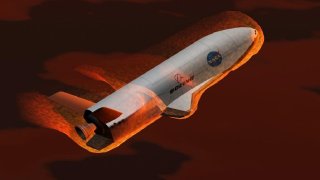Russia Freaks Thinking the X-37B Space Plane Could Drop Nuclear Weapons
The X-37B, a U.S. space plane managed by the Space Force, has set records by orbiting the Earth for over two years. This mini-version of the space shuttle, with a length of 29 feet, height of 9.5 feet, and wingspan of nearly 15 feet, has raised concerns in China and Russia about potential military applications.
Summary and Key Points: The X-37B, a U.S. space plane managed by the Space Force, has set records by orbiting the Earth for over two years. This mini-version of the space shuttle, with a length of 29 feet, height of 9.5 feet, and wingspan of nearly 15 feet, has raised concerns in China and Russia about potential military applications.

-While the primary mission involves scientific experiments like converting solar energy to microwave energy, Russia has accused the X-37B of being capable of dropping nuclear bombs—a claim disputed by experts.
-The spacecraft's ability to stay in orbit for extended periods and land at will suggests significant reconnaissance potential.
Military Applications? Why Russia and China Fear the X-37B Space Plane
What if I told you there is not only a U.S. space plane that orbited the Earth but that it had been in orbit for over two years at one point? The X-37B robotic spacecraft set a new record for duration and keeps heading back into space to this day. And that makes China and Russia quite worried it could have military applications.
The X-37B Borrows from the Space Shuttle
The X-37B can be described as a mini-version of the space shuttle – the emphasis here is on “mini.”
The X-37B is only 29 feet long, 9.5 feet tall, and has a wingspan of nearly 15 feet. It takes off on a rocket and lands horizontally on an airstrip. Since it falls under Space Force control, the mission is nominally a military program. But Space Force has barely been forthcoming about various experiments being conducted on X-37B.
Uninterrupted Solar Power Experiment
The main scientific effort is the spacecraft’s evaluation of a solar project that turns unreflected sunlight from space into radio frequency microwave energy that could be collected on earth. The Photovoltaic Radiofrequency Antenna Module Flight Experiment (PRAM-FX), is in its early stages, but if it shows promise, it could someday be part of a constellation of satellites that converts a gargantuan amount of sunlight to make uninterrupted electrical power.

A Russian Defense Contractor Says the Spacecraft Can Deliver Nuclear Bombs
There has been some chatter from Russia that the X-37B has a serious military application – namely dropping nuclear devices from space.
Yan Novikov, the director of Russia’s state-owned Almaz-Antey defense company dropped the accusation at a conference in 2021.
Novikov said the X-37B’s scientific mission is a smokescreen and that the craft actually spies on Russia and will target the country with the three nuclear weapons it has on board.
Kyle Mizokami, writing for Popular Mechanics, threw cold water on these accusations, asserting that the X-37B could not be a nuclear bomber.
Potential Spying on Russia and China
You can bet Space Force will continue keeping the military side of things under wraps.
Dropping of nuclear bombs is far-fetched but it is plausible the X-37B has some means to spy on Russia and China – perhaps with secret Cube Sat (nanosatellites) devices.
What it could do for reconnaissance beyond what satellites already conduct when surveilling is not clear, but a spacecraft that can stay up for two years and then land whenever it wants has some military value.

We’ll keep an eye on X-37B because it is such an interesting and tantalizing program. The success of the X-37B has ample public relations value for Space Force and it could be used as a recruiting tool for the new branch of the military.
Meanwhile, the X-37B’s exploits are a good way to keep U.S. adversaries wondering what it’s up to in space.
About the Author
Brent M. Eastwood, PhD, is the author of Humans, Machines, and Data: Future Trends in Warfare. He is an Emerging Threats expert and former U.S. Army Infantry officer. You can follow him on Twitter @BMEastwood.
All images are Creative Commons or Shutterstock.
From the Vault
Russia Freaked Out: Why the U.S. Navy 'Unretired' the Iowa-Class Battleships
Battleship vs. Battlecruiser: Iowa-Class vs. Russia's Kirov-Class (Who Wins?)


